When Edward (Dow) finished in Clongowes he went straight into Edward Dowley & Sons Ltd. where he was to spend his whole career. As was the practice at the time, he was positioned outside the company for a period to get a different business experience before rejoining Edward Dowley & Sons Ltd. To this end he was placed in Suttons of Cork. This was slightly ironic as it was Suttons of Cork that were to take over Edward Dowley & Sons some 30 years later. It was during his period in Cork that he met and married Elizabeth Roche on April 24th, 1940. Betty was the daughter of Charles B. Roche and Emily Connolly who lived at “Cooleens”, Douglas Rd., Cork. Dow was in Clongowes with Betty’s two brothers, Bernard and Jimmy.

“Cooleens”, Douglas Rd., Cork, the home of the Roche family

ROCHE-CONNOLLY 50th WEDDING ANNIVERSARY
Eileen, Molly, Helen and Betty with Charlie & Emily
(Missing Bernard and Jimmy deceased)
Charlie Roche was in the rope, canvas and chandlery business on the Coal Quay in Cork and lived in “Cooleens”, on the Douglas Rd. The Roche family also became involved in local politics and Charlie’s uncle, Augustine Roche, who was a wine merchant in McCurtain St., was Mayor of Cork in 1893-94 and Lord Mayor of Cork in 1904.


Part of the Copeland’s China presentation to Mayor Roche of Cork
Standing: Brendan Dowley, Maureen Roche, Jimmy Roche, Mona Kearney, Bertie Daly, Edward Dowley & Betty Roche, Walter Earle, Molly Roche, Eileen Roche. Seated: Hellen Roche, Joe Dowley, Emily Roche Kathleen Dowley, Charlie Roche, Betty Dowley

Edward Dowley and Betty Roche on their wedding day, 24th April 1940

“Iverk”, opposite the boys National School in Piltown
Following their marriage, Betty and Dow honeymooned on the Island of Jersey. This was at the beginning of the Second World War and the honeymoon had to be cut short because of the potential Nazi invasion of the island. On returning to Ireland they took up residence in Piltown, Co. Kilkenny, which was a small rural village, four miles from Carrick-on-Suir on the main road to Waterford (now by-passed). This must have been a major culture shock for Betty as she moved from a bustling city with all mod cons and a busy sporting and social life to something totally different. Piltown at the time had a rudimentary electricity supply system but no private telephone connection. All communication was by letter or in the case of emergency by telegram or by the phone in the local post office. There were two shops in the village which supplied groceries only and these were limited by rationing during the war. As there was no petrol for private cars during the war the only means of transport was by bicycle. As a woman expecting her first child in a rural village with no doctor, mother must have had a feeling of total isolation, especially from her family in Cork.
Betty and Dow initially lived in a small four bed roomed house called “Iverk”, opposite the boys National School in Piltown. The first two children, Leslie (b. 1941) and Frank (b. 1948) were both born in Cork but would have lived in Iverk up to 1951. This house was rented from John Anthony of Anthony’s Inn and sawmills in Piltown. Much of my time in Iverk coincided with the Second World War and its aftermath. During this period, the absence of petrol meant that a wonderful convertible sports car lay covered in the garage until petrol retuned some years after the end of WW2. During the war all travel was by bicycle with me on the carrier. This was the normal mode of transport fom Piltown to Castlane for Sunday lunch.
My memory of the house was that it was freezing in the winter and roasting in the summer. One winter’s night my father went to bed with a glass of water. The following morning, I can recall the glass was split in half and the frozen contents were erect on the bedside table. This was probably during the big freeze of 1947.
While the house was small, the garden was large and well laid out, It had three lawns, an orchard and an extensive vegetable garden. Mother was a keen gardener but most of the physical input was provided by Jimmy Cooney of Pill Hill. I think it was Jimmy that instilled in me a love for plants.
Rosmary Rossiter (Little Boo Peep), Leslie Dowley (Little Boy Blue) & unknown at Maylon Dowley’s wedding to Seamus Mahon
Rosmary Rossiter (Little Boo Peep), Leslie Dowley (Little Boy Blue) at Maylon Dowley’s wedding to Seamus Mahon
My first school was the National Boys School in Piltown where I started my formal education in September of 1945. This school had two class rooms and two teachers. One room contained the junior boys of four to eight years of age while the other room accommodated boys up to twelve years old. In the junior school we had a wonderful teacher by the name of Mrs. Banny Malone. The senior school was less fortunate as they had a grumpy old teacher called Pierce Mulqueen who was known to frequently administer corporal punishment.
As the school was a new structure it had an indoor flush toilet system. Many of the boys had to be instructed on the use of such new fangled technology as this equipment was not a normal feature of all private houses of that time in Piltown.

STUDENTS OF PILTOWN BOYS N.S. 1946
Back Row: Mickey Kinley, Percy Briscoe, John Hunt, Matt Talbot, Dan O’Brien, Finbar Doran, Leo Connell, Joe O’Shea, Mervin Briscoe.
Third Row: Bernard Kelly, Billy Quinn, Watty Keane, Tony Hawe, Pat Oakie, Tony O’Brien, John Oakie, Pat O’Shea, Paddy Murphy, Billy Hearne.
Second Row: Seamus Cuddihy, Alphie Briscoe, Frank Breen, ?. O’Brien, Noel Briscoe, Aidan Byrne, Joe Wall, Billy Murphy, Paddy O’Sullivan, Watty Walsh, Jimmy Talbot.
Front Row: Thomas Dowley (Beech Farm/Ballyknock), Leslie Dowley (Piltown/Tinvane), Richard Keating, Liam Grace, Mickey Halloran, Seamus Comerford, Kevin Ryan, Watty Walsh, Barney Knox.
What is so interesting about the above photograph is that it brings many parts of the Dowley family history together.
The Briscoe Brothers: These were a very large family that lived in the old National School which was located beside the new girls National School on Pill Hill, in Piltown. These were descendents of the same Briscoe family who was the original Landlords of Tinvane House. Another brother (not in photo) was called Henry. This is a grim reminder of how rapidly the fortunes of a family can change. The boys father often reminded me that his family were the original owners of Tinvane, but at that age it went over my head.
The O’Shea Brothers: The father of these boys was the creamery manager in Piltown. He was also the first to occupy “Greenmount” on the Clonmel Rd. in Carrick when he was made the first manager of Miloko, the new Chocolate Crumb factory on the Clonmel Road. This was the same house that was later occupied by Joe Dowley and the Tyndalls after Joe sold Castlane. Later still it was occupied by my mother Betty, and is currently occupied by my brother Peter and his family.
It is also a coincidence that Pat O’Shea and myself are still very close friends. Pat has played in nearly all the Dowley Golf Outings and was winner of the visitors prize on several occasions.
The two Dowleys: The first child in the front row (from left) is Thomas Dowley and the second is Leslie Dowley. The former is from the Beech Farm between Piltown and Fiddown and this is the only branch of the Ballyknock Dowleys that still exists in Ireland while the latter is a descendant of the Tinvane Dowleys.
It is a further coincidence that the two Dowleys are sitting together. This confirmed the friendship of the two boys who would have known nothing of each others families at that time. The Beech Farm family always pronounced the name “Dooley” while the Tinvane family always referred to themselves as Dowley but were called “Dooley” by most everyone outside the immediate Tinvane family.
The Bessborough Estate (then owned by the Oblate Fathers) was located very close to my parent’s first house in Piltown. At that time, my best friend was Barney Knox. The Knox family lived across the road from us in one of the remaining gate lodges on the estate. Barney’s father worked in Bessborough and as a result we had the full run of the estate, including the orchard and vegetable garden. As children, it is understandable that we would have spent a lot of time in such idyllic surroundings. During the summer we swam and fished in the river Pill and gorged ourselves on the many fruits in the walled gardens. During the winter we skated on the two lakes on the estate. The inside lake was used during daylight, while the outside lake was used at night where it could be illuminated by the lights from the few cars that were back on the road after WW2.
One of my abiding post war memories was travelling with Barney and his father to Waterford on a four wheeled carriage laden with fruit and vegetables, and drawn by two black horses. The objective of the trip was to sell the vegetables from the estate, but for the two small boys, the 24 mile round trip was a major expedition. The Knox house seemed to always have the wonderful aroma of bread cooking on the griddle pan over an open fire. The hot, homemade white current bread with butter and sweet tea was always a welcome treat on cold afternoons. The Knox family were also very self sufficient, producing, collecting or catching most of their own food. It was with the Knox’s that I first learned how to snare and paunch rabbits, dig out badgers, harvest mushrooms and protect orchards from frost. This was a valuable and lasting education.
After three years in the Piltown National School I was sent to Cork to continue my formal education where I attended CBC, Cork between 1948 and 1950. It was there I got my first rugby jersey which I wore with great pride in Piltown when I returned.
When in Cork I stayed with my maternal grandparents. They lived in “Cooleens” on the Douglas Rd. opposite the South Infirmary. This was a beautiful red tiled house with numerous spacious rooms. Oak carvings seemed to be a feature of the internal design especially in the sitting room, living room and hall. The house was situated in a very large, well maintained garden, given its proximity to Cork city centre. The most memorable horticultural structure within the garden was the very old weeping willow. This produced a perfect foliar dome in the summer which provided an excellent hiding place for children and protected all inside from the most inclement weather. There was also an extensive vegetable garden, complete with glasshouse where grandfather Roche spent a lot of time tending to his tomatoes. There were also two enormous garages, which were identical to the house. However, I can only remember one relatively old Ford Prefect which was rarely taken out. Everyone seemed to use the excellent bus service which existed outside the gates of Cooleens.
Grandfather Roche was a tall, gregarious man with a keen interest in sport. He was a very accomplished tennis player and also had a keen interest in golf and rugby. Grandmother Emily was a small gentile and very practical lady. While there were servants in the house, she contrasted dramatically with granny Dowley, in that she did a lot of cooking herself. It was in Cooleens that I got my first taste of drisheen cooked by granny Roche. I thought it was fantastic until I learned what it was made from.
Living approximately half a mile further along the Douglas Rd., in Woolhara Park was aunt Molly who was married to Herbie Robertson. They had one son, Neil, who was two years my junior. Across the river Lee in Tivolli lived another cousin, Tony Roche who was one year my junior. Mother’s other sisters, Eileen and Helen were unmarried and living in Coolens. Their respective husbands to be, Brian Murphy and Jack Nagle, were regular visitors to the house and were great fun, especially when grandfather forced them to consume rather large helpings of his favourite “Paddy” whiskey which he bought by the case.
Granny Roche used to regularly walk me to Woolhara Park and back. During this walk she examined me on the two times tables and when I got one wrong I got a clip on the ear. Pain made me learn quickly. Apart from the academic years in Cooleens, I also spent many summers in Cork with my cousin Neil Robertson where they had a summer house in Church Bay, just outside Crosshaven. Here I first learned to swim and play tennis on their new hard court. It was an idyllic area and the house had a panoramic sea view from Daunt’s lightship to Roche’s Point. At high tide we swam and at low tide we caught crabs and lobsters with the aide of a gaffe. We also had the use of a small rowing boat and a canoe which were used to catch mackrel. At this time the normal mode of travel to the USA was by transatlantic liner. Ships such as the America, New Amsterdam, Maurittania and the Queen Mary were regular visitors to Cork harbour. They often moored off Church Bay, were in the evenings, when they were fully illuminated they made for a spectacular sight with the beams of light flickering on the water and the sound of the palm court orchestra wafting across the bay.
The immediate post war period had other delights for young boys. These came fom the regular manouvers of the Irish navy with their high speed motor torpedo boats as well as the minesweepers on their frequent clean up missions. The highlight of the naval activities was the target practice. This envolved a tug boat towing six huge taregets accross the bay from Roches Point to Church Bay. When the firing started, hugh spouts of water erupted skywards as the shells exploded. The noise that accompanied these excercises was so loud that the local residents were warned to open all windows in an effort to prevent the glass fom shattering.

Neil and Leslie (Note Pipe) with Charlie Roche, Cooleens April 1944

Leslie and Neil with Charlie Roche, Roberts Cove August 1945
It was also in Church Bay that I first learned to swim and got my first introduction to the game of tennis. The Robertson’s new hard court proved to be a great attraction and Neil and myself played regularly and were sometime joined by Hugh McKeon and Peter Canty.
Neil and Leslie (first cousins) on the new hard court in Church Bay in 1949.
In 1951 we moved from “Iverk” to the “Tower House” in Piltown where the remainder of the family were born, Raymond (1952), Gillian (1954) and Peter (1957). The Tower House was originally the property of Bianconi who ran a horse drawn public transport company between Waterford and Clonmel and also originally owned Anthony’s Inn.
The house was located on the main Clonmel-Waterford Road on the Carrick side of Piltown. It was much more spacious than our previous house and the six bedrooms provided ample room for the then expanding family. There was also a wooden building in the grounds which was used as a table tennis and games area. There was also a thirteen acre field attached to the house which was farmed by Kilonerry Estates. In the autumn, when the corn was cut, it doubled as a car race track where we learned to drive in advance of achieving the statutory age for a licence.
Tower House, Piltown, Co. Kilkenny
The tower opposite the Tower House is an unfinished monument in memory of the Earl of Bessborough’s son who was thought to have died during the Napoleonic wars. However, he survived and returned home. Hence two stories only were completed. The uppermost part was added later as a water reservoir which supplied water to the town of Piltown in the 1950’s.

The water tower opposite Tower House in Piltown
Edward (Dow) died of liver failure on the 23rd of April 1963 aged 50 while Betty died on May 17th, 1994 aged 78. Both are buried in the new graveyard in Faugheen.
Edward Joseph Leslie Dowley (1941- ): Leslie was educated at Piltown Boys National School, CBC Cork, CBS Carrick-on-Suir and Castleknock College Dublin. His third level studies were in University College Dublin (Agricultural Science), Trinity College Dublin (Genetics), University of New Hampshire, USA (Plant Pathology).
He joined the staff of The Agricultural Institute at Oak Park in Carlow as a Potato Pathologist in 1964 with responsibility for breeding for disease resistance. During his tenure at Oak Park he acted as Head of the Plant Pathology Department, Head of the Pathology & Breeding Department and eventually as Head of the Plant Science Department which was an amalgamation of all scientific departments at Oak Park. He also served as Chairman of the Pathology Section of the European Association of Potato Research and as Chairman and President of the Society of Irish Plant Pathologists. He was awarded the Edwin Butler Medal for services to plant pathology in Ireland in 2004. He retired in 2008 after 44 years service.
Leslie married Cora Morrissey of Carrick-on-Suir in 1966. They live in Oak Park, Carlow and have five children (Robert, Douglas, Susan, Tanya and Lesley) and 11 grand-children, Jennifer, Sarah, Lauren, James, Alex, Matthew, Andrew, Evan, Aaron, Jack and Emma.

THE Piltown Dowleys pictured in Castlane 1962
Leslie, Betty, Edward Dowley (Dow), Tony Roche (Betty’s nephew)
Frank, Raymond, Peter and Gillian
Charles Francis Dowley (1948-2015):
Frank was born in Cork on June 9th, 1948. Hrom a very earlystage he was afflicted with a very severe form of asthma. As a child, It was not uncommon to see him with his head out the window, gasping for breath. With the more severe attacks he would turn blue and we used to fear for his survival.
As a school boy attended Piltown Boys Nation School, CBS Carrick-on-Suir and Castleknock College. While in Castleknock he got another severe attack and was rushed to the old St. Vincents Hospital in St. Stephen’s Green. While there he was anointed and I was called to his bedside as Dr. Jacko Moloney did not expect him to survive. Fortunately he did, but we were then advised to remove him from Castleknock as it was felt that his ability to sit any exams was remote. This effectively ended his academic education and he returned to Piltown and his asthma seem to abate but mush have resulted in some permanent damage.
He later went on to study farm management under the Farm Apprenticeship Scheme and after some years as an apprentice, mainly in Co. Cork, he went on to become the farm manager on a farm near Garristown, Co. Dublin.
Frank married Alison Mackey from Dublin. They live in Moorepark, Garristown, Co. Dublin and have two children Simon and Karen.
Frank sadly passed away suddenly on Friday, November 20th, 2015.
Frank’s grave in Garristown, Co. Dublin
Raymond Hillary Dowley (1952- ): Raymond attended Piltown Boys Nation School, CBS Carrick-on-Suir and Castleknock College. He later went into the hospitality trade and spent a number of years in London before returning to Carrick-on-Suir. Having purchased Tinvane House, he ran it as a guest house for a number of years before returning to London. He currently runs another guest house, Fatima House, in Carrick-on-Suir.
Raymond married Peggy Power from Piltown in 1975. They have three children (Gail, Gordon and Wesley) and two grand-children.
Mary Gillian Dowley (1954- ): Gillian attended Piltown Girls National School and later attended Miss Meridith’s School in Dublin where she stayed with her aunt Joan Montgomery and family in Rathgar. After leaving school Gillian worked in An Foras Forbaha until some time after her marriage.
Gillian married Bill Hogan, an architect from Wexford. They initially lived in Dublin before finally moving to Waterford. They have three children James, Sarah and David.
John Peter Dowley (1957- ): Peter attended the Piltown Boys National Schoo, CBS in Carrick-on-Suir and the Technical School in Carrick-on-Suir. Peter works in the services industry as well as being an accomplished musician.
Peter married Marie Walsh from Waterford. They live in Greenmount, Carrick-on-Suir and have three children, Trevor, Caomhe and Heather.
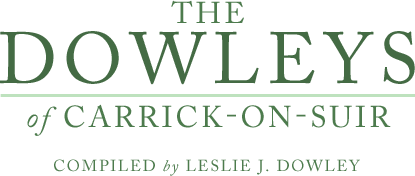
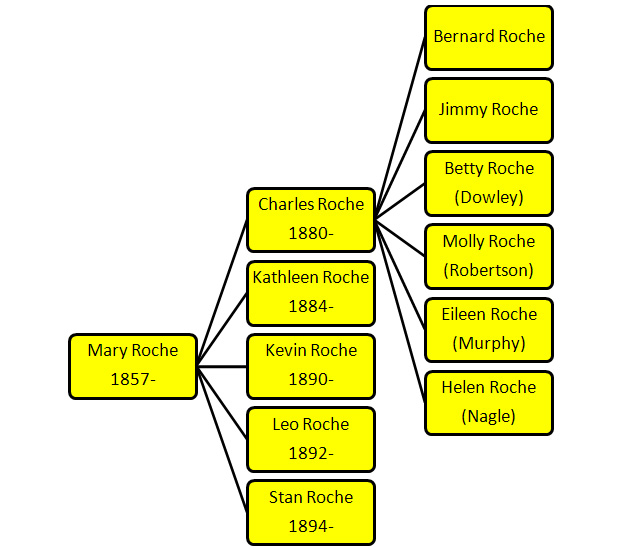

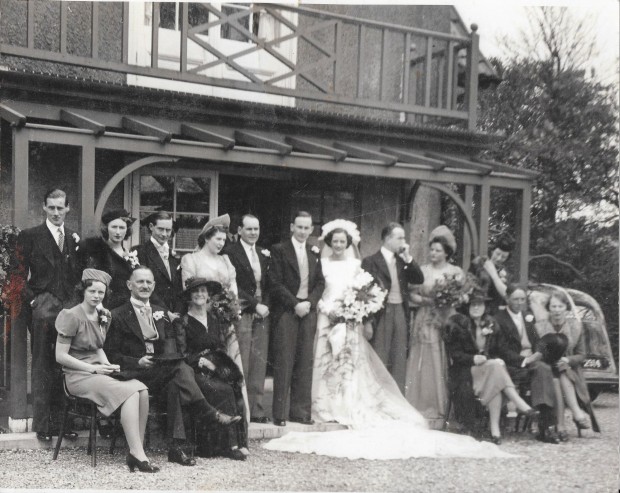
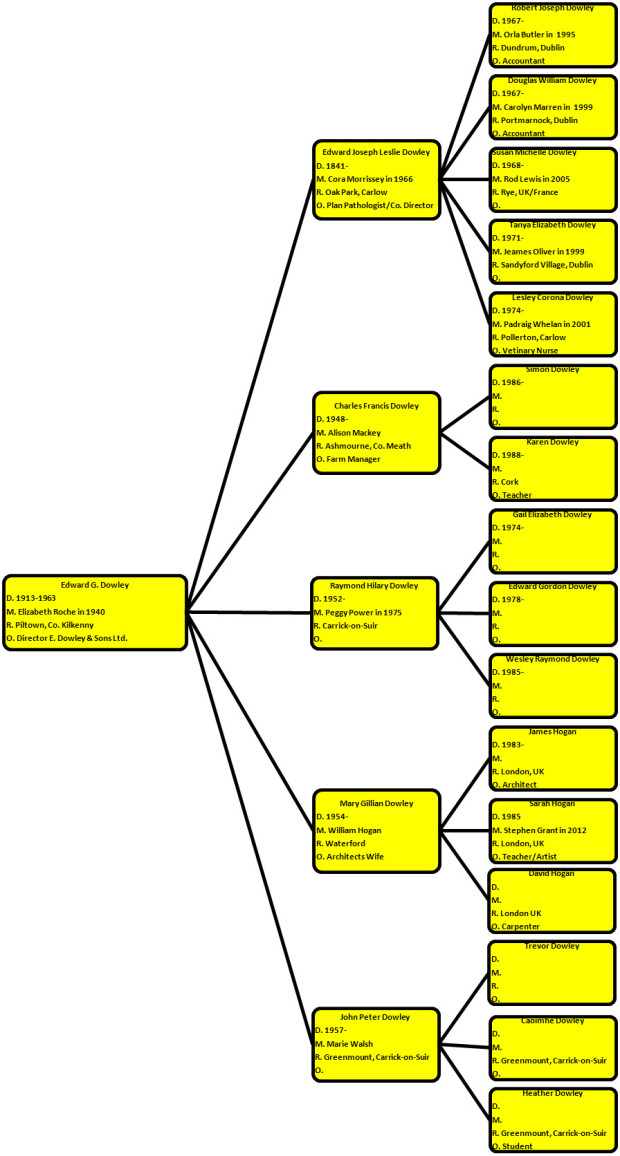
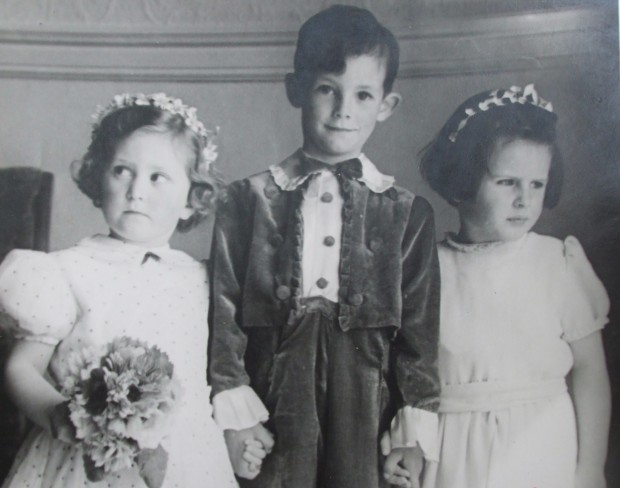
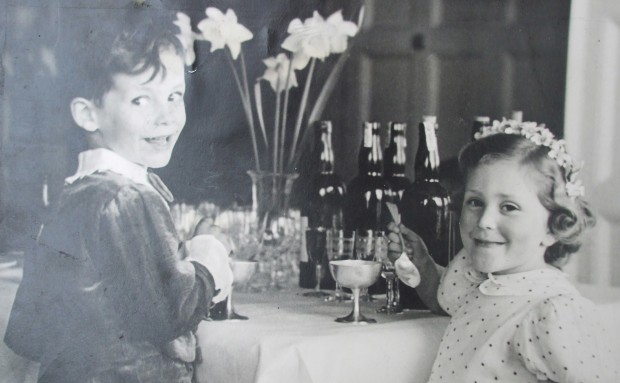
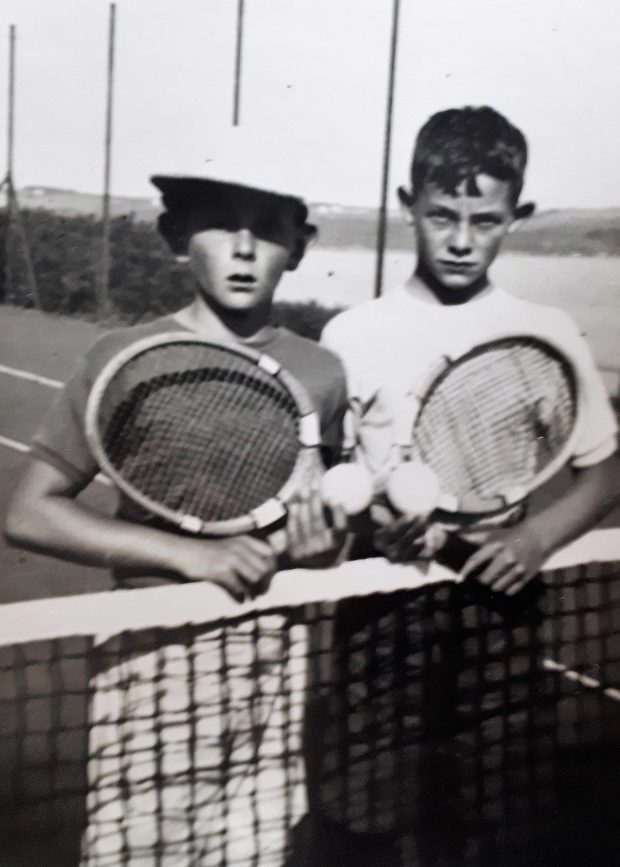
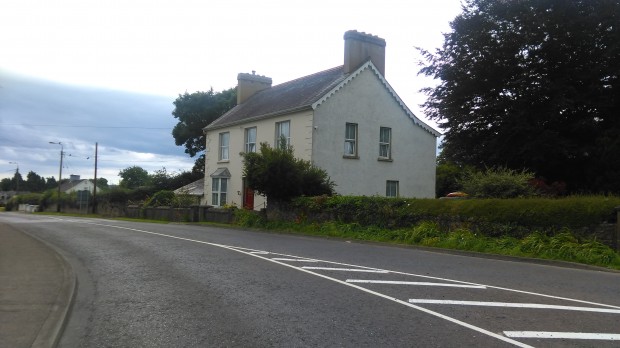
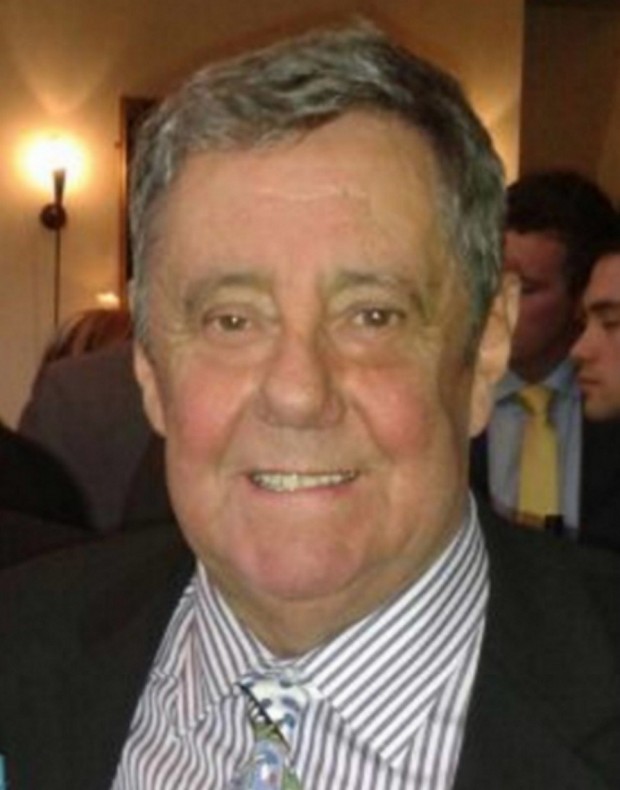

Wow! It’s great to see the Tower house again! When I was 8 in 1976, my family lived in the house for a year. We came from the United States for my father’s work. I went to school there in town for the third grade. Great memories! Glad to see it’s still there and looking good!
I am researching my ancestors – Shea / O’Shea from Killinaspick / Piltown / Mullinavat / Mooncoin area of southern Kilkenny. I came across your very interesting family history and foud references to O’Sheas from Piltown. I think Patrick O’Shea may well be my grand-uncle, and cousin of my father – also Patrick, son of Walter Henry O’Shea who emigrated to Australia in 1909. Are you able to help me work out the connections? A tall order I know! Any help would be gratefully received.
Greetings from Sydney,
Paul
Hello again, my cousin Leslie!
Betsy here, your Aunt Helen’s oldest. We haven’t met much in the past half-century.
Those photos are great, really moving, and I must tell you there’s not much these days that I find moving!
I’ll come back to them tonight, and think about times past.
Have you got other old photos? I’ll have a look and see if I have any that would interest you.
Sincerely,
BETSY
very interesting as i do a fair amount of tracing
I am the daughter of Anastasis Mary Dowley of Berch Farm. She was born 2903 . Parents Thomas Dowley and Hanoria O’Shea Dowley. Brother Joseph Dowley. He had two children Thomas and Joseph. Noreen was an orphaned cousin.
Correction!!
Anastasia was born in 1903 Beech Farm.
I forgot to mention I live in San Diego California. My phone obviously cant spell. Sorry.
I remember staying at Beech Farm with its dairy and trips to take the milk onto the cooperative. Have lost touch with my cousins.
I went to school with Ray in the CBS in Carrick. Ray was always a very quiet lad. We knew many of the Dowleys,especially Robert and Paddy. It was with total shock that we heard of the death of Paddy in that horrific accident on the Waterford to Tramore road. Paddy had only been in with us on the previous Saturday…he was looking for one of those large diesel barrels. We knew them well from the Carrick rugby team. My father,John Walsh,rate collector,was involved with setting up the team at the time. I can always remember him bringing oranges to the players at half time and bringing home the flag poles after the match. The field at the time was opposite the main entrance to Tinvane. That would have been late 1950s.
I did forget to mention one thing. Back in the eighties,I was working as Accountant for a US company in Cork. At the time,we regularly got visits from a Neil Robertson,sales manager with Bayer Ireland. I wonder is he the same Neil who is your first cousin? A very small world indeed if it is! A very pleasant person I have to say. We live today not far from Cooleens,just off the Douglas Road in Cork.
We actually grew up near the three bridges in Carrick,very near where Florrie Dowley lived. In fact,I remember going for a walk towards the Three btidges,and my parents stopping to chat with Florrie! Like I said,it is a very small world